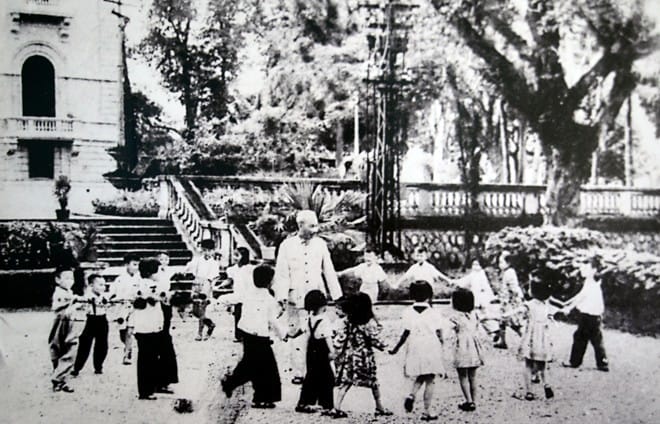On the early morning of June 1st, 1942, the German Nazi army besieged the village of Lidice (Bohemia), capturing 173 men, 196 women, and children. They massacred 66 people on site, sent 104 children to concentration camps, where 88 of them died in gas chambers, and 9 others were taken as forced laborers for the Nazis. There was not a single soul left in Lidice village.

Since 1950, June 1st has become Children’s Day.
In memory of the hundreds of innocent children mercilessly killed by the Nazi Germany, on 1949, the International Democratic Women’s Association decided to designate June 1st as International Children’s Day with the objective of protecting children and demanding governments to take responsibility for the lives of children and allocate more budgets to education, as well as safeguarding and caring for adolescents and children. Since 1950, June 1st has become Children’s Day.Two years later, on June 10th, 1944, the German Nazi surrounded the town of Oradour-sur-Glane (France), capturing 400 people, including many women and over 100 children, and burned them to death.
Each country has its own Children’s Day
In 1954, in order to encourage countries to remember children and protect their rights, the United Nations proposed the World Children’s Day to be held on November 20th each year.
On this day, many important events concerning children in the world have taken place: the Declaration of the Rights of the Child (1959), the Convention on the Rights of the Child, which was signed on this day (1989), and was ratified by more than 191 countries. Vietnam was the first country in Asia and the second country in the world to ratify this Convention.
Although the suggested date is November 20th, the United Nations allows member countries to organize their own Children’s Day on different chosen dates. And some countries do celebrate on November 20th in their own territories, such as Canada, Australia, Pakistan, Egypt, and more.
International Children’s Day in Vietnam
Vietnam was the first country in Asia and the second country in the world to ratify the Convention on the Rights of the Child – the first comprehensive international legal document addressing children’s rights, based on the principle that children have the right to care, protection, and special assistance.
In our country, immediately after gaining independence, June 1st and the Mid-Autumn Festival (August 15th Lunar Calendar) have truly become festive days of joy for children nationwide.
The first International Children’s Day (June 1st, 1950) during the period of our nation’s resistance against French colonialism, when the Vietnamese people were undergoing the most severe hardships, President Ho Chi Minh still always thought of the children across the country and sent letters of congratulations to the youth and children.

President Ho Chi Minh playing with children in the Presidential Palace. Photo archives
President Ho Chi Minh was always deeply concerned and taught children to be good people. Those 5 Things that President Ho taught youngsters and children have become the educational content for the Ho Chi Minh Pioneer Youth Union.Since then, every year on Children’s Day and the Mid-Autumn Festival, children nationwide joyfully receive letters of congratulations from President Ho Chi Minh.
The Origins and Significance of International Children’s Day on June 1st
June 1st is International Children’s Day, a special holiday dedicated to children. On this day, children not only receive loving wishes from their grandparents, parents, and relatives, but also receive special gifts. For parents, it is an opportunity to show their love for their children through heartfelt wishes and thoughtful presents.





































